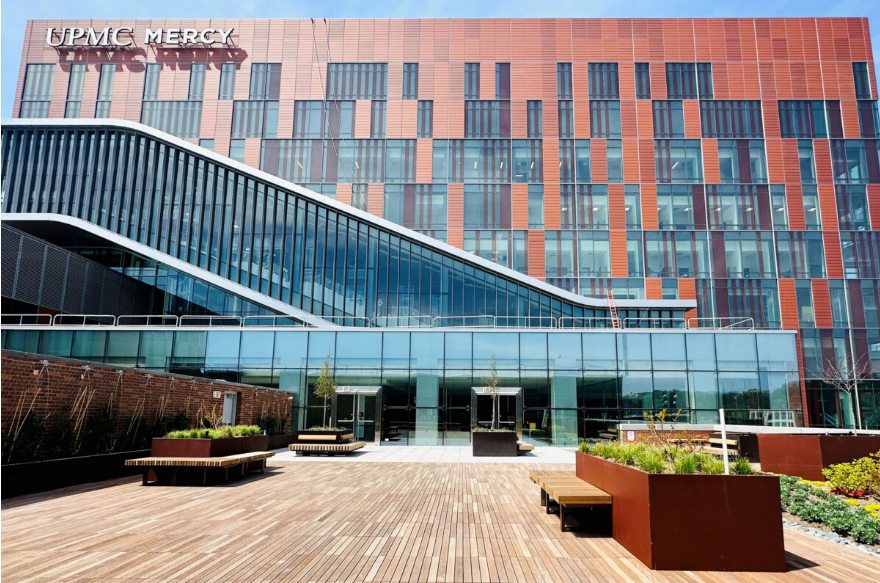UPMC Mercy Pavilion received its first patients on May 1, ushering in a new era of advanced vision care and healing. The 10-story, 410,000-square-foot building in central Pittsburgh, Pennsylvania is home to the UPMC Vision Institute and UPMC Rehabilitation Institute.
HOK served as the lead designer for the patient-focused facility, working in close collaboration with doctors José-Alain Sahel, director of the UPMC Vision Institute and Gwendolyn Sowa, director of the UPMC Rehabilitation Institute. The tower was built by Mascaro and Barton Malow, a joint venture. HOK also partnered with consultant Chris Downey, one of the world’s few blind architects.
Accommodating clinicians, researchers, educators and commercial partners, UPMC Mercy Pavilion serves as a destination for healing, an incubator for medical advancements and a hub for biomedical research. The building’s brick and terracotta façade complement the surrounding architecture of Pittsburgh’s Uptown neighborhood, while the interior welcomes blind and low-vision visitors with physical cues to help them navigate the space. The design includes lighting strategies that rely on contrast and brightness, sound as a wayfinding tool and materials and textures that aid people with canes.
A low-vision, clinic-gym hybrid includes an interactive healing center, exam rooms, therapy stations and a central gym. A mock apartment and street lab encourage patients to participate in simulations that teach life skills. Training ramps and stairs in a rooftop healing garden give patients a safe environment to prepare for real-life experiences.
Additional features of the building include:
Eight eye disease operating rooms
83 eye exam rooms
10 rehab exam rooms
100,600 square feet of research space
A retail pharmacy and café
Art installations that engage more than just the visual to include hearing, touch and smell





